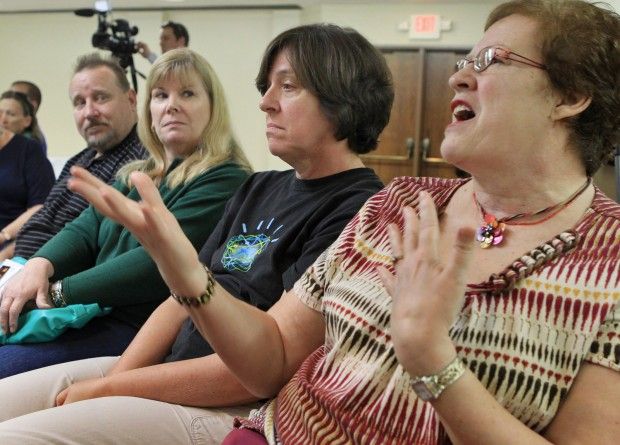At ball fields across the ◊Ó–¬–”∞…‘≠¥¥ region this week, many conversations between innings likely went something like this:
“You hear about the nuclear waste at the Bridgeton fields?”
“Yeah, it sounds bad. My kids have been playing in that dirt for years. What are we going to do?”
The answer to that question, at least for some, became obvious when the organizers of a tournament scheduled for this weekend at the moved the games to other fields.
Like the Environmental Protection Agency, we’re suspicious of the quality of testing by Bridgeton residents that led to the latest outcry. Scientifically validated testing, by the Army Corps of Engineers in 2005 and last year by the Missouri Department of Natural Resources, found no excessive levels of radiation at the site.
People are also reading…
The athletic complex is less than a mile from the radioactive . An engineer working with the residents tested soil collected from a drainage ditch in a parking lot at the complex. They did not test soil from the ball fields.
The samples were collected by the Bridgeton residents with a $16,000 radiation detector donated by an attorney suing the landfill’s owner. The group said a spike of gamma radiation was found in one soil sample. The tests are being analyzed in a lab in Wisconsin and by the EPA.
, director of the University of California-Davis health physics programs, said in a story Thursday by Post-Dispatch reporter Blythe Bernhard that the data were inconclusive without a lab analysis but did not look exceptionally high.
Mr. Bushberg stressed that radiation is found naturally in the environment, including in soil, air and food, and that the levels can fluctuate without posing health concerns.
Despite all the assurance, parents and residents are scared. The combination of the ongoing controversy about the safety of the landfill itself and whether there is contamination in the surrounding air, water and soil and the reaction by the director of the Cinco de Mayo Slugfest youth baseball tournament demand dramatic action from the EPA.
From the best science advice that is being offered, people are overreacting and don’t need to panic. It’s easy for us, sitting roughly 20.8 miles from the landfill, to say that.
But parents whose kids will roll around in the ball fields and play in the dirt don’t want to take chances. They not only need assurance that the fields get a clean bill of health, they need reassurance. The directors of things like tournaments that will bring in 95 baseball teams from all over the Midwest understandably feel that they can’t be careful enough.
No one wants a child to be hurt. No one wants the potential liability. No one wants to put anyone in harm’s way.
The city of Bridgeton is suffering from the fear at this point. People are getting angry. Bob Totterer, president of the Bridgeton Athletic Association, blamed the problem on “reckless sensationalism,” and criticized the Post-Dispatch (not by name) for reporting on the residents’ testing. He said “reporters relied upon information provided by a source not qualified to render a technical judgment.”
Republic Services, the landfill’s owner, also criticized the residents’ testing.
“The issues are complex. The science is complicated,” a spokesman for the company said. “But no public good is served by presenting years of extensive scientifically validated investigation and a random screening sample by a layman as equally weighted.”
Both statements about the testing are accurate. But they don’t eliminate the concern.
The federal agency needs to bring in testing equipment, sample everything (yet again, if necessary) and give the area a good housekeeping seal of approval. Or not, if they should happen to find anything wrong.
This is basically what Attorney General Chris Koster to the EPA last week. Mr. Koster, who puts his finger in the air as well as any politician in Missouri, sees through the science and understands human nature. Only the EPA can come in right now and calm things down. It’s why he threatened to sue them if they didn’t do just that.
It’s clear that after years of ignoring the landfill, a stench that arose from the adjoining Bridgeton Landfill last year during cold weather has focused attention on the radioactive waste stored at West Lake. There’s also a fire smoldering underground at Bridgeton that has people alarmed.
For the moment, who is at fault doesn’t matter. Pointing fingers and fear-mongering is not going to resolve the problem. The long-term solutions to dealing with the waste and ongoing underground fire are complicated and will continue to stir much debate. Continued pressure will need to be applied to the state and federal agencies and the landfill’s owner to make sure science and safety win out over politics and profit.
But fixing the immediate problem of assuring the community that its ball fields are safe is an easy and necessary step. Test the dirt. Make a show of it. Do what must be done.










